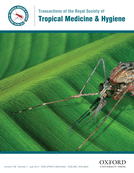-
Views
-
Cite
Cite
Mariza Vono Tancredi, Eliseu Alves Waldman, Predictors of progression to AIDS after HIV infection diagnosis in the pre- and post-HAART eras in a Brazilian AIDS-free cohort, Transactions of The Royal Society of Tropical Medicine and Hygiene, Volume 108, Issue 7, July 2014, Pages 408–414, https://doi.org/10.1093/trstmh/tru078
Close - Share Icon Share
Abstract
The impact of HAART (highly active antiretroviral therapy) on the time for progression from HIV diagnosis to AIDS (TPHA) has been little studied in middle-income countries. This study aimed to analyze the TPHA in the pre- and post-HAART eras and to investigate its predictors.
We carried out a retrospective cohort study, including 1879 AIDS-free HIV-infected individuals diagnosed between 1988 and 2003 and followed up until 2005. The incidences of AIDS were estimated in person-years. The Kaplan–Meier method was applied to estimate TPHA and the Cox proportional hazard model used to assess predictors of TPHA.
AIDS incidence decreased from 12.8 to 5.0 per 1000 person-years over the period 1992 to 2003. TPHA (cumulative probability of AIDS-free time) for the maximum follow-up of 9 years was 21.9% among untreated individuals and 76.8% among those on HAART. Predictors of shorter TPHA included non-HAART ART treatment; no treatment; age ≥50 years; black/brown skin color; injection drug use; no schooling; and baseline CD4 lower than 500 cells/mm3.
HAART has decreased AIDS incidence, prolonged life and increased the number of people living with HIV/AIDS. The post-HAART era presents new challenges to healthcare services in middle-income countries, the main requirements being enhanced strategies focused on early diagnosis, more resource allocation and developing approaches for healthcare systems to manage AIDS as a chronic disease.






Comments